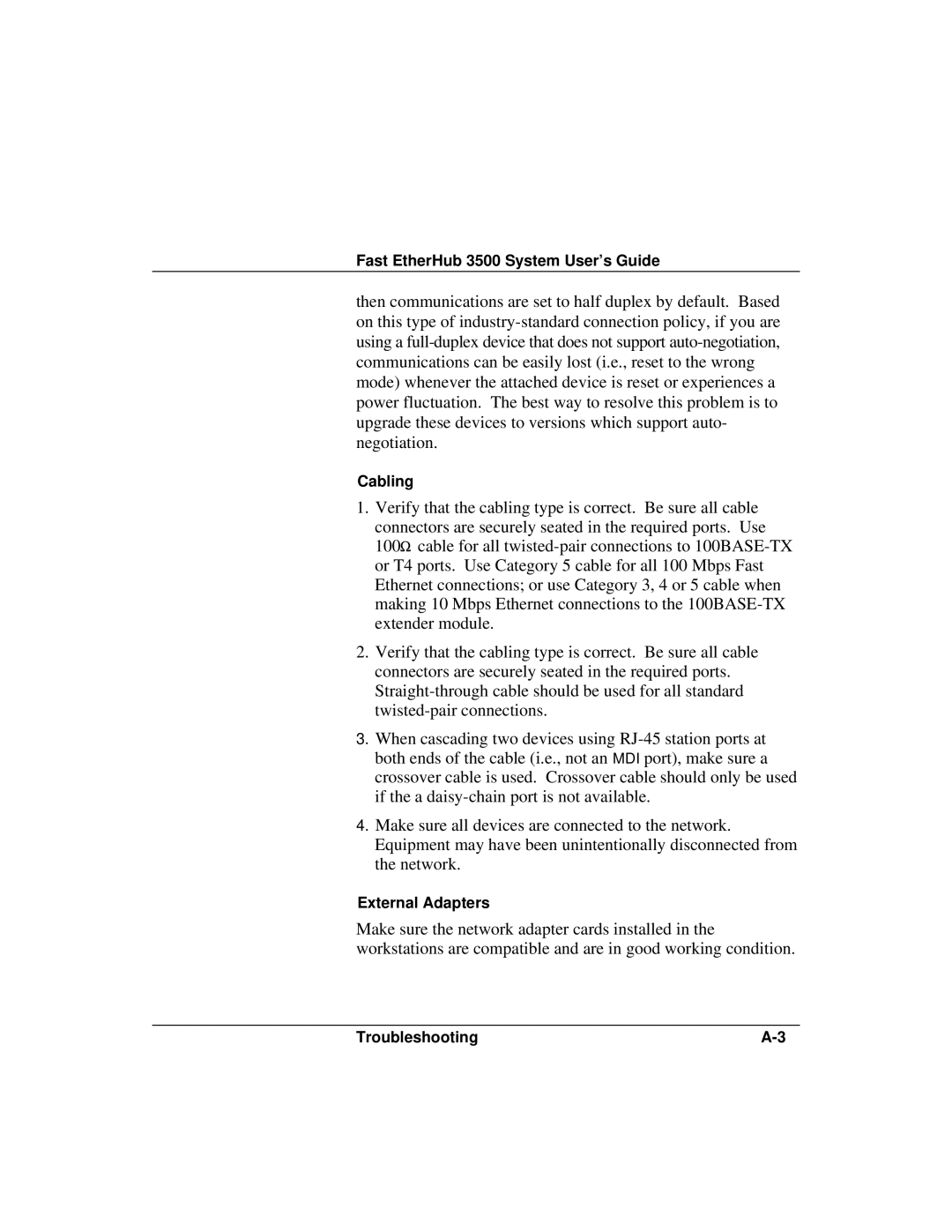Fast EtherHub 3500 System User’s Guide
then communications are set to half duplex by default. Based on this type of industry-standard connection policy, if you are using a full-duplex device that does not support auto-negotiation, communications can be easily lost (i.e., reset to the wrong mode) whenever the attached device is reset or experiences a power fluctuation. The best way to resolve this problem is to upgrade these devices to versions which support auto- negotiation.
Cabling
1.Verify that the cabling type is correct. Be sure all cable
connectors are securely seated in the required ports. Use
100W cable for all twisted-pair connections to 100BASE-TX or T4 ports. Use Category 5 cable for all 100 Mbps Fast Ethernet connections; or use Category 3, 4 or 5 cable when making 10 Mbps Ethernet connections to the 100BASE-TX extender module.
2.Verify that the cabling type is correct. Be sure all cable connectors are securely seated in the required ports. Straight-through cable should be used for all standard twisted-pair connections.
3.When cascading two devices using RJ-45 station ports at both ends of the cable (i.e., not an MDI port), make sure a crossover cable is used. Crossover cable should only be used if the a daisy-chain port is not available.
4.Make sure all devices are connected to the network. Equipment may have been unintentionally disconnected from the network.
External Adapters
Make sure the network adapter cards installed in the workstations are compatible and are in good working condition.

